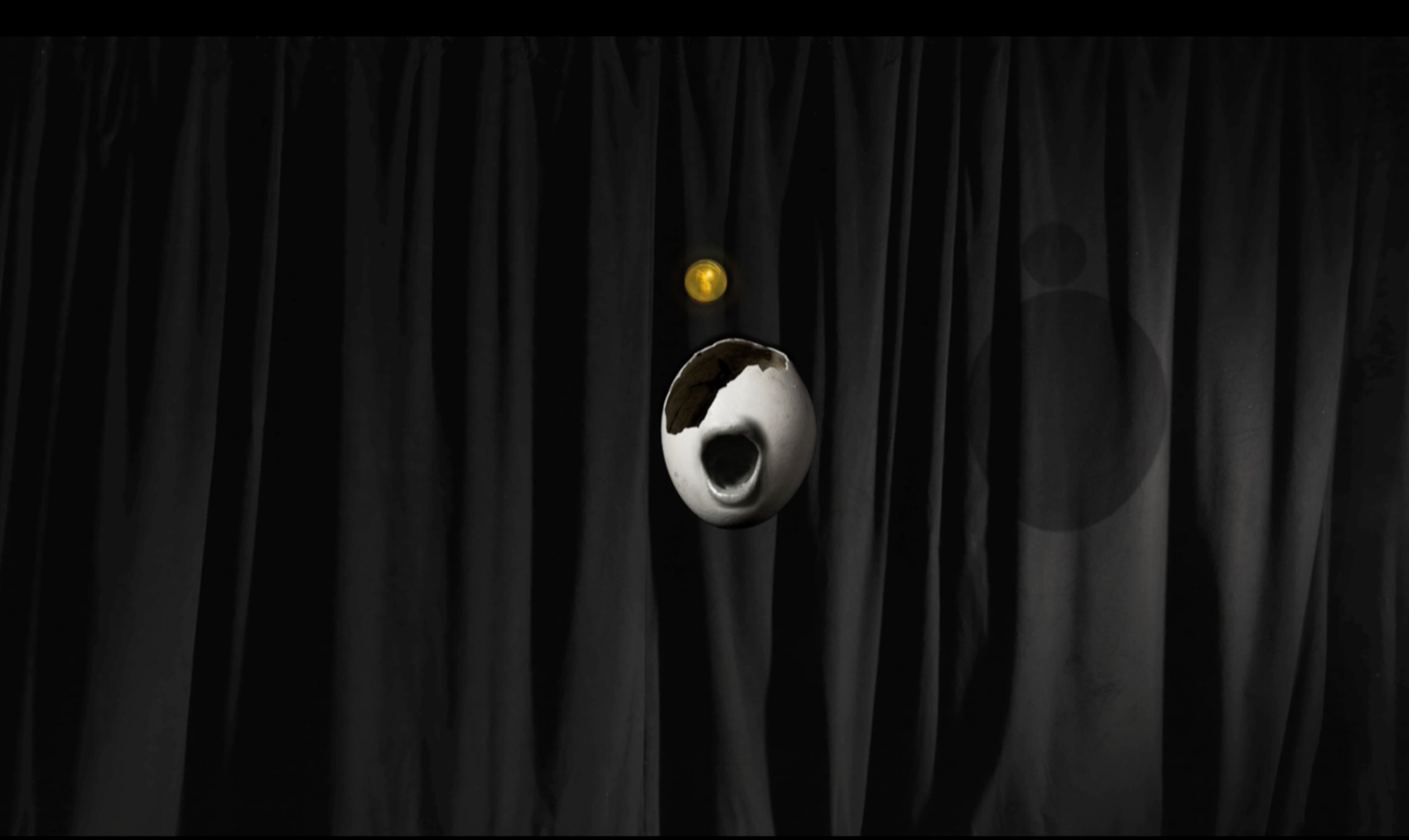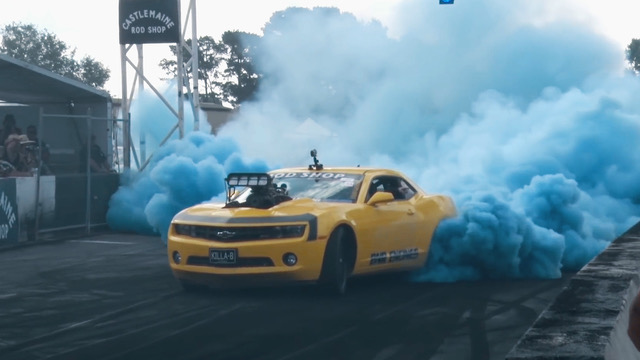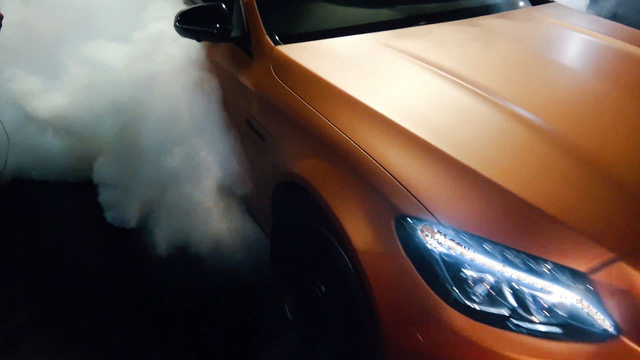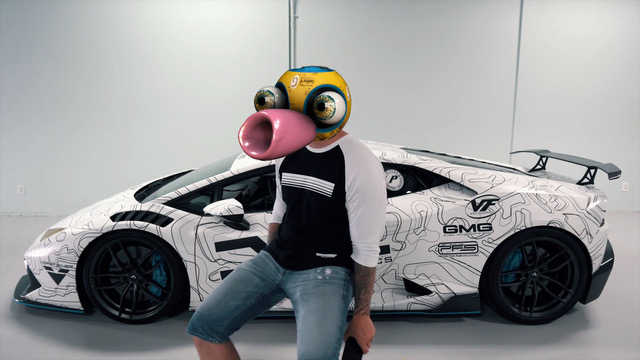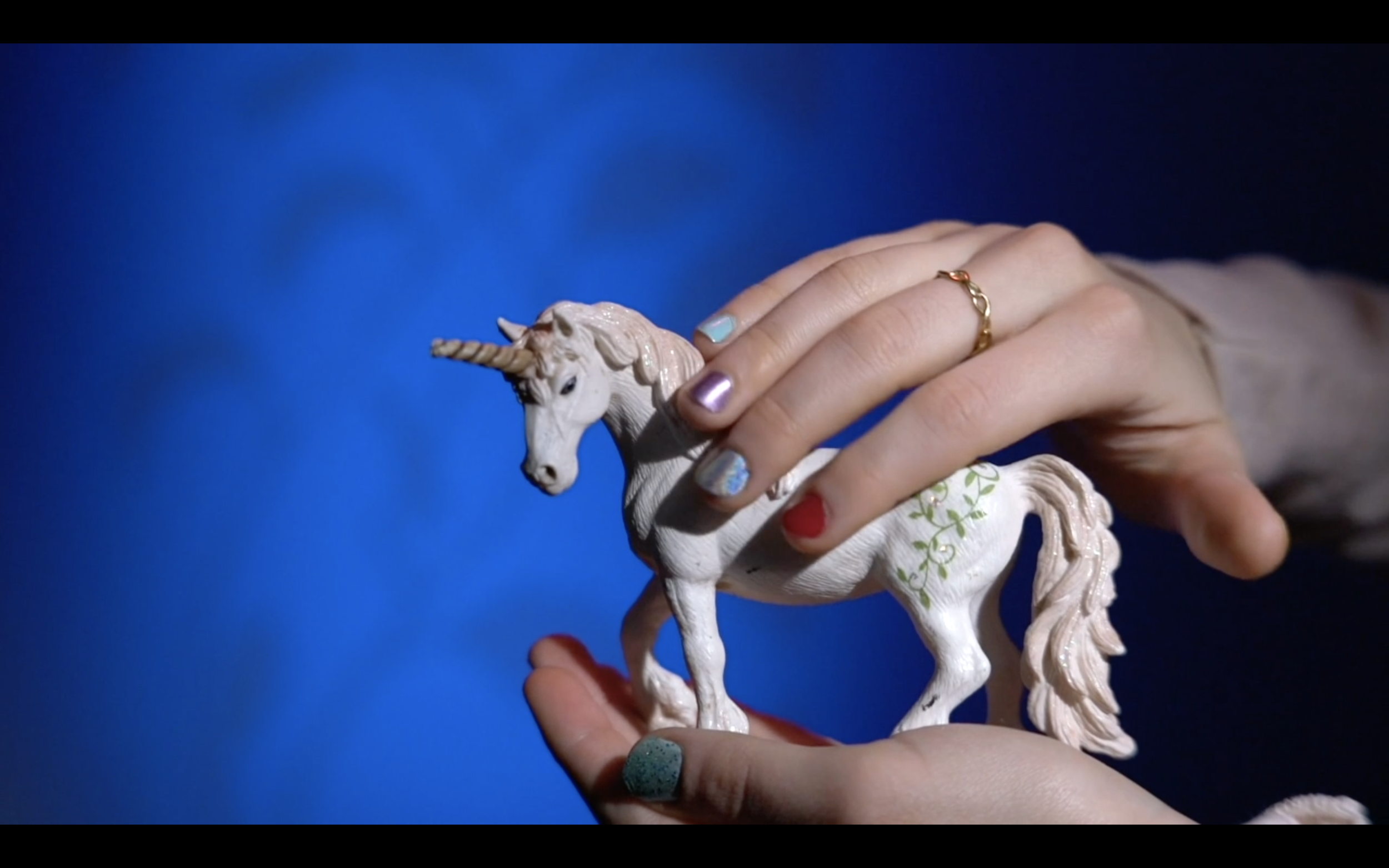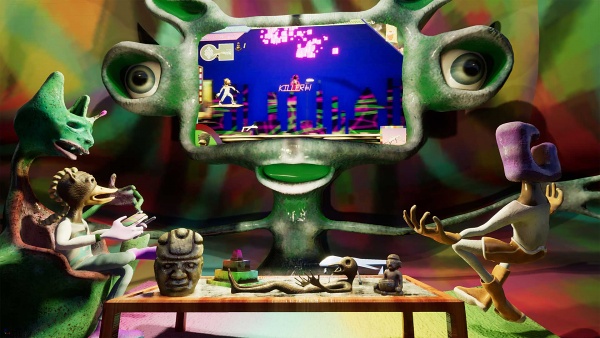Interview with David Gryn: Founder, Daata Editions, ArtProjx & Film Curator—Art Basel, Miami
Interview by Editor-In-Chief, Liberté Grace
David Gryn is the founding director of Daata Editions, which aims to empower artists working with digital mediums, including video, sound and web via commissioning moving image and sound artworks by leading international artists. He has been the curator of the Film and Sound program at Art Basel in Miami Beach—the largest art fair in the world—for the last seven years.
For the 2018 edition of Independent New York, Sound and Video exhibiting in New York from the 8th-11th March, Gryn was selected to curate a series of artist-created video and sound experiences. The collaboration between Independent and Spring Place featured works by a range of international artists exploring digital mediums, including; Larry Achiampong, Lynda Benglis, BREYER P-ORRIDGE, Keren Cytter, Ed Fornieles, Leo Gabin, David Lynch (works depicted above), Laurel Nakadate, Puppies Puppies, Torbjørn Rødland, and Saya Woolfalk.
I AM FILM Founder and CEO, Amy Tam, interviewed David to discuss Daata Editions and its unique business model, that is successfully supporting and commissioning video artists within the art world.
David, how would you describe Daata Editions (Daata)?
DG: It’s an online marketplace for moving image and sound artworks. My goal is to grow the audience and awareness for this medium, while allowing prospective buyers to access the artworks at anytime, from anywhere. Daata has more than 70 artists, with over 300 artworks commissioned for the platform, and all works are released entirely online. The platform works with both leading and emerging artist talents, prominent curators, writers, collectors, art fairs, art magazines, and various art world collaborators including; Amalia Ulman, Takeshi Murata, Tracey Emin, Chloe Wise, Jon Rafman, Raachad Newsome (Collaboration with Vanity Projects feat. below) and many more.
Daata Editions x Vanity Projects, Rashaad Newsome
Why did you choose to create this type of platform?
DG: Although it’s changing, the art market still tends to prefer object-based artworks. There’s a sense of resistance in galleries, auction houses, and art fairs; to normalise the type of works Daata commissions, because it’s unclear how to make them as commercial as more traditional mediums. People recognise that the industry is moving in this direction and they talk about it, but they won’t engage with it in its current position.
I’m trying to treat it as normally as a painting or sculpture now, instead of waiting for the “right moment”. It’s easy to show digital artworks online, so I started Daata as an answer to that problem. It was about how to encourage all the players—the institutions, the curators, the collectors, the audiences—to treat it more seriously. To me, the solution was the possibility of pushing forward one version of a marketplace, like you might open up a gallery, but online. It is a new way of distributing and showing artists’ moving image, sound, and web-based work. I didn’t realise I was ahead of the curve, until I set it up.
How would you explain the way the Daata business model works?
DG: We pay the artists upfront and then we distribute the artworks at a price, and we sell the work and give the artist a royalty. It’s inherently structured as a self-sustaining economy. Currently, it's still philanthropic in its process, and we pay all the artists. If we haven’t paid an artist, we have an equal royalty share.
The business model is effectively saying: there’s a value to this work. I’ve realised, to my chagrin, that almost everyone who treats art seriously, generally does so when there’s a price point. Art that is for free is very difficult to quantify for almost everybody—other than the artist. I really do value art that isn’t necessarily commercial. But with Daata, I am trying to put forward a case that you can actually "have your cake and eat it too". You can have this work viewed and seen for free, and you can also collect it, buy it, and have the HD version for you to play whenever and on whatever device.
Works start at 100-200 dollars, and they go up incrementally until the maximum price of around 6000 dollars, in the video section. This method encourages early purchase, and the longer a work is for sale, the more it grows in value. We’re not trying to setup an auction model, a resale model, or a celebrity artist model. No matter how prominent the artist, the value starts out pretty flat across all parts of the site.
“I can’t base our website on the most famous, most money-making artist, because then it will start becoming a website dominated by the market forces. I wanted to make it a website dominated by the artwork and the artist.”
If you get in early, you can buy major artists and future major artists at a low price, which is exciting. With Daata, we’ve established A model, not THE model. It’s just one way of doing it.
Do you think artists or gallerists (decision-makers) have more power in the sale of art today?
DG: The power of the art fair is dominant. It’s very tilted towards the market position of what pays and drives an art fair’s business model. Galleries are trying to take things into their own hands to change it, but it’s hard. The problem with the relationship with the auction house and the art fair is; it tilts it to top dollar profit, whereas, if you’re supporting all sorts of artists in your gallery business model, you’re interested in the artist and the outcomes—it’s not always about how much money each artist makes.
It’s about how you put that work into a museum and how you grow that artist’s career. That’s often the gallery’s investment—time and costs, and that’s shattered by the art fair model, with many art fairs happening almost every month. Some galleries don’t operate with a great brain anymore, because they have to keep reacting to the next art fairs. The art world needs to alter and turn on its axis better.
Do you think the resistance in the marketplace comes from insufficient demand for these types of works or from the entities controlling what’s available—like art fairs and galleries?
DG: I think it has to be treated as a central cornerstone of an art fair, not as a hidden away sideshow. In my role as Curator of Film & Sound at Art Basel in Miami Beach, I work very closely with Art Basel to try and make showing artists moving image and sound, very large and dynamic—luckily, they understand the need to empower the medium.
Art Basel, Miami Film (Trailer) - Organised in association with David Gryn, Director of Daata Editions and London's Artprojx.
How does Daata fit into this context?
DG: I think there needs to be many outlets like Daata who can put their resources into supporting artists who make work, and distribute it. I keep coming across entities who want to take over the world, and I just want to take over the project I’m doing and make it the best I possibly can, within finite boundaries and borders. I don’t see what I’m doing with Daata as better or hierarchical, I just see it as being part of an art world jigsaw puzzle.
What has the demand been like in terms of sales of works?
DG: It’s great, it just needs to be more. It’s currently more sales than I’ve ever made in my part of the art world before. But to actually get to a point where there is more revenue to pay the next round of artists and not needing seed funding, it’s still got a couple of years to go. I saw the first two to three years as building and positioning within the art world. I have conversations with certain collectors repeatedly, some people are buying anonymously. There have been some people starting to buy the work more regularly, that I don’t know, and they’re coming back.
What has the artist response been in terms of outcomes for the artists commissioned?
DG: The brief for making the artwork is very open and aims to enable the artist to take risks and be experimental. They have said we’ve made them feel more like they’ve been able to try out new things, and that’s been a nice challenge for some artists. They’ve said it’s informed much of their next body of work. Many of them have been shown in artist exhibitions, galleries, museums, and art fairs.
As a curator, how do you get introduced to artists or is there an application process?
DG: We don’t have applications. We’re aware of artists in the art world, because I get to see lot of new artists and artworks from art fair prospects, art galleries, artists and so—and I always look. I also don’t know everything, so, it’s also a lot of word of mouth. In the ecosystem of artists, curators, and collectors—we trust each other’s opinions. Not all artists are the right ones for this kind of project. It isn’t a platform for a Hollywood filmmaker to dabble in making an artwork, unless they consider themselves an artist and they're in the artist/art world ecosystem. It isn’t a platform for all.
However, there’s always room for the quirky collaboration. I have just started distributing a virtual reality project, that is working with several artists to make a composite VR artwork with several different artists in it. We’re willing to take that risk with certain people and projects—as I need to dip my toe into unchartered territories sometimes, just to keep things fresh and open to new potentials.
What would you say have been the main challenges since you started Daata?
DG: My greatest challenge is creating an understanding that this is a very normal medium and trying to communicate that. I would say everything is a challenge, so it’s exciting. That’s why I set this up—to make a difference within a medium. I try to have a balanced program between artists who are both males and females and across diverse backgrounds. I think about that deeply, so it’s not just a trigger reaction process of signing up the artist who put their hands up first; that’s an easier and lazy way of operating in the art world.
In terms of unexpected positive outcomes, what have you learned in the last three years?
DG: There’s lots of positive things. I don’t see my work just about how great the outcomes are for me. It’s about a project that has the best outcomes for as many people in the process as possible, and that’s always been my interest. That’s where I’m happiest. I guess it’s like I’m always looking under the stone to see what’s there, to make things better. When I work with organisations as dominant as Art Basel, I still always look to see what could make them or my project better for all parties involved. The true and integrity-driven people in the art world that I work with, understand collaboration and mutual support for each other. They realise that we’re in the same game together to enhance a better world for art world artists, audience activity, and cultural pursuit.
What is working or not working about the way things work in the film industry, and how is that in contrast or comparison to Daata?
DG: I see the artwork made by an artist as an artwork and the film work made by a filmmaker as a film work. I don’t see a hybridity and a way the two work together. I still say there are many great filmmakers who are great artists—but their art is making film, whereas, the artist makes artwork. An artist will generally make an artwork without a financial position and a filmmaker will probably not make a film unless it’s got funding.
However brilliant they are as filmmakers, a film doesn't get made because of the costs of the production, whereas an artist can often make an artwork without anyone else involved. If you’re going to make an artwork, you've got to make it exist to be an artist. You can’t then call yourself an artist if you haven’t got an artwork. It just doesn’t add up.
In terms of how I work with artists in Daata: I commission based on the reputation of the artist and knowledge of their past work.
“I go into the process trusting the artist to deliver the artwork as they wish. I don’t need drawing boards and proposals, as I believe in the potential of the artist to make the best decisions for their work and aim for outcome that they demand of and for their work.”
I think there are so many filmmakers who are brilliant, and to cast doubt upon them for being an artist is wrong. Usually, I’d say they’re just a great filmmaker. There are just a few that go beyond just being a great filmmaker and I believe they are genuine artists. People like Andrei Tarkovsky, David Lynch, John Waters, and Sophia Coppola. Then, there are people who successfully cross mediums like Wim Wenders and Jim Jarmusch. Sometimes, the artist becomes the Hollywood filmmaker and can lose the strength of their moving image works as an artist. I think it’s hard once you have those budgets and the media spotlight to be the same brilliant artist. The value in an artist who works alone is often in the raw edges, the roughness and the idea generation. Once that dries out and is dominated by the sheen of wealth, it can lose the interest of the greater art world.
For further information on Daata Editions visit: www.daataeditions.com.
Follow Daata Editions on Instagram and Facebook (@daataeditions).
Follow I AM FILM on Instagram (iamfilmofficial). #IAMFILM and Join our list to receive news and views by the Masters of Film.
Independent & Spring Trailer - courtesy of Daata Editions
ABOUT THE FOUNDER
David Gryn
David Gryn is the Founder and Director of Daata Editions, Artprojx, Strangelove Time Based Media Festival and Curator of Film and Sound, Art Basel in Miami Beach. David has a strong reputation worldwide in producing, curating, enabling and promoting artists’ audio visual/digital medium projects and events that have consistently excited and attracted large audiences and introduced new audiences to the arts.
Daata Editions commissions artist video, sound, poetry and web. This new, logical and innovative way to collect art is designed as a native platform to a new generation of artists who work with digital mediums. moving image and sound. Limited edition artworks can be viewed and acquired as digital downloads.
Daata’s strength is in the relationship with artists and the commissioned artwork. Young and emerging artists worldwide see Daata as their ideal art platform and a goal for their future career, as it speak to them in the language of now - the language of digital media. Daata has the trust, respect and credibility amongst renowned and emerging artists, galleries, curators, art fairs, museums and institutions worldwide.
Daata Editions has participated in the following art fairs: Art Cologne, Frieze London, NADA New York, Sunday London, PHOTOFAIRS Shanghai, Art Los Angeles Contemporary, EXPO CHICAGO, Chart Copenhagen, LOOP Barcelona, Independent Brussels, Untitled Miami and San Francisco, Strangelove Film Festival. David Gryn, Director of Daata Editions curated his 7th Editions of Film & Sound at Art Basel in Miami Beach in 2017, Daata has presented screenings and events in collaboration with citizenM Hotels worldwide, Label Dalbin, Artspace, Artsy, Salon 94, Kunsthalle Stavanger Norway, Kristiansand Kunsthall Norway, KIASMA Museum Helsinki, M Woods Museum Beijing, MouArt Gallery Beijing, Zuecca Projects & Bauer Hotel in Venice, Vanity Projects NYC and Miami, Soho House New York & Chicago, ACE Hotels LA & Chicago, Toronto International Film Festival & Venice Film Festival, Julia Stoschek Collection Berlin & Dusseldorf, Zabludowicz Collection London and more.
Daata Editions has commissioned works from both new and renown artists, including; David Blandy, Jake Chapman, Keren Cytter, Sue de Beer, Tracey Emin, Leo Gabin, Rachel Maclean, Takeshi Murata, Rashaad Newsome, Hannah Perry, Jon Rafman, Scott Reeder, Amalia Ulman, Artie Vierkant, Lu Yang, Toby Ziegler, amongst others. Daata Editions is breaking ground within the art world in its vision to make artists digital media as desirable for purchase, as traditional artworks—both online and at global art fairs.
Daata artworks are in leading art collections in USA, China, Germany, Finland, UK, Netherlands and more. https://daata-editions.com/
Upcoming projects in 2018 include: Vanity Projects in NY and Miami, Independent Art Fair, If So, What? A new art fair in Silicon Valley (Gryn & Daata as Technology Curator), Art Rio, Stranglove 2018, citizenM Hotel projects, and new artists commissions.


